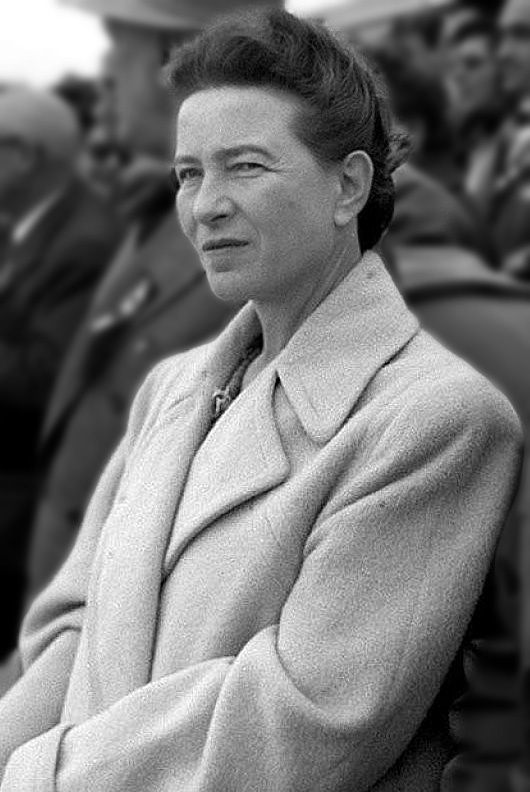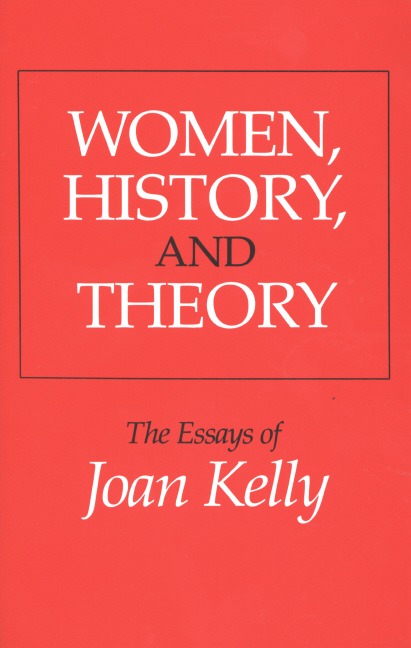20th Century Feminist History and Postmodernism

In the 20th century, feminist historians would seek out a larger change to historiography, as it was the institution that perpetuated an unchanging view of women in history. Avenues that had been previously closed now had the ability to make their debut. Along with other histories, including those of previously colonized people groups, women’s history emerged alongside second-wave feminism, blossoming because of women questioning why their story had been left out of the narrative. Using the groundwork laid by postmodernism, second-wave feminism would fundamentally transform historiography through bringing to light the many male-centric ways that the world was classified through, and questioning the traditional ways of thinking about the world.
Throughout much of history, women were pushed to the back burner of the narrative. With the rise of feminist authors, historians began to question the relationship of women in history. Simone de Beauvoir, one of the most influential feminists during the early postmodern period, wrote The Second Sex, a novel on the treatment of women, and one of the first pieces of literature that addresses the sex and gender distinction.
The difference between biological sex and socially constructed gender is what would drive much of second-wave feminism. De Beauvoir states that “[h]umanity is male, and man defines woman, not in herself, but in relation to himself” (de Beauvoir, pg. 26). De Beauvoir was bringing the actual problem to the forefront. Instead of attacking the lack of female perspectives within society, she was questioning the fact that a woman’s entire existence was based upon the men who surrounded her. This was groundbreaking, as it was questioning the system itself, and the positionality of history as a whole. While this was not unique to the postmodern era, as every change in historiography took someone questioning the current norm, it was still one of the most pivotal moments within the field of feminist historiography.

Feminist historians began to question the histories written about women because of the perspective bias of their male authors. The male historians’ bias and lack of knowledge surrounding women were bound to come through, harming women’s development, and their bias allowed society to perpetuate the dominant, negative view of women. While historiography had continued to evolve, the fundamental aspect that never developed was the way that the male dominant society would perpetuate their own view of women. Without questioning their positionality, historians wrote about the role of women in society as a fixed entity, never seeing their view of women as anything other than the truth, until second-wave feminism. The categorization of history was generally made up of areas traditionally controlled by males. The lack of histories written by women made it incredibly difficult to change their status throughout history, as it was only being looked at through a male lens. Because of the revolutionary work done by de Beauvoir, and many other second-wave feminists like her, the underlying institutions were being questioned, and actual change was beginning to occur within the field of historiography.
Feminist historians criticized the notion that there was a natural place for women within the world. This was not a view that historians actively tried to perpetuate, but rather a concept that previous historians had conformed to. Historians themselves “could not lay claim to special knowledge about the ‘natural” roles and relation of the sexes, but they knew what that order was, or ought to be. History simply tended to confirm it,” (Kelly, pg. 7). This was one of the fundamental ways that female historians would go on to change historiography. Recognizing that most categories within history were created for and by men, women could then go forward and illustrate the gender roles that had seemed so “natural” to histories were actually “a social and not a natural one. This perception forms the core idea that upsets traditional thinking,” (Kelly, pg. 1). This was one of the steps away from the Rankean traditions of the past.
Where Rankean historians believed that facts were inherently true, feminist historiography recognized that socially constructed identities may seem like fact, but are, in fact, society creating an identity that should be conformed to. When the traditional periodization of history was questioned, it left the doors open for other marginalized groups to have their time in the spotlight. Joan Kelly’s famous text, Did Women Have a Renaissance, would be one of the first examples of women questioning the status quo, and expressing their discontent with it. In 1987, West and Zimmerman would write a piece called “Doing Gender”, in which they described the ways that societal gender norms are perpetuated through every aspect of people’s lives. While this would be written almost forty years after the rise of second-wave feminist, it goes to show the monumental impact that feminist would have on society.
The relationships between the sexes, as well as the relationships between the majority and the minority, would begin to change because of feminist historian’s push into postmodernism. Postmodern historiography would begin to question the traditional categories of analysis that had been created by the historiographic revolution during the Enlightenment. Questioning the positionality of those who created the categories, as well as the periodization of history, would leave the pathway open for other people groups to be included in the narrative.
Joan Kelly would go on to change the field of historiography through revolutionizing feminist history. One of Kelly’s major theories was of the existence of a female renaissance. Kelly stated that the major moments in history for men were not necessarily the same for women.
“Events that further the historical development of men, liberating them from natural, social, or ideological constraints, have quite different, even opposite, effects upon women,” (Kelly, pg. 19).
This is something that feminist historians tried to change within historiography. Through their work, they were able to push the narrative off center and open the floodgates for other marginalized groups in society. Ignoring an entire people groups voice is not only detrimental for them, it is also incredibly harmful to the rest of society. This is the fatal flaw in male centered history, which takes away the ability for anyone to learn from a female perspective.

When second-wave feminism began to infiltrate higher learning institutions, they were able to create the lasting change that they had desired from the start. While this was an important step, Beauvoir pointed out the limitations.
“Woman has always been, if not man’s slave, at least his vassal; the two sexes have never divided the world up equally; and still today, even though her condition is changing, woman is heavily handicapped” (Beauvoir, pg. 29).
This was also true within academia. Female historians, while becoming more common in the profession, would not be able to feel the full effect of the slow changes within society until many years later. This was also an incredibly hard task, because “in seeking to add women to the fund of historical knowledge, women’s history has revitalized theory, for it has shaken the conceptual foundations of historical study.” (Kelly, pg. 1). Frankly, it was an uphill battle, fighting against ingrained societal norms. This became even more difficult because “of the social consequences of sex category membership: the allocation of power and resources not only in the domestic, economic, and political domains but also in the broad arena of interpersonal relations,” (West and Fenstermaker, pg. 390).
Women infiltrating into the world of academia was a huge step towards the paradigm shift within society that second-wave feminists were fighting for, and they were able to use the institutional power that they had gained to help mold the change they were seeking in other areas. Society was, however, working against the early second-wave feminists, and change was slow. Questioning the traditional ways of thinking was met, as it often is, with resistance. Much later, after postmodernists had critiqued much of history before it, feminist historians have the space to say their piece.
Early second-wave feminists would lead the way to break the norms within historiography, giving way to a more decentralized narrative, and the ever present question of one’s inherent bias. Modern feminist historians have also become critical of their own bias. These changes have taken time to come about and “[t]he extraordinary range and variety of early modern women’s cultural agency and creativity have come into focus in ways that Kelly could hardly have imagined,” (Coletti, pg. 249).
Theresa Coletti, reviewing Kelly’s work almost fifty years later, is one of the examples of the sweeping change that would take hold of historiography. Coletti’s critique of second-wave feminists was only possible because of the work done by early feminists like Kelly. The effects of second-wave feminism within history would take decades to solidify and only then would it create the change they wanted to see. While much of the critique of second-wave feminists was that they assumed that all women’s experiences were the same, third-wave feminist would step in to make these changes.

Feminist historians would contribute a significant amount to the push towards postmodernism. By exposing the problematic ways in which historiography had been previously practiced, as well as fundamentally shifting away from the singular perspective of the white male, historiography was pushed into a new era. These changes pushed for other groups to finally be included in the grand narrative, but second-wave feminism had its problems. While this was the first step towards a more all-inclusive history, there was almost no mention of women of color. White, middle-class, women led the charge, but they seemed to only take their issues into account. In the later 1980’s, this would profoundly change with the development of third-wave feminism. Women of color, of different socio-economic backgrounds, and of differing identities would begin to push for another change in historiography, creating an entirely new tidal wave of change.
During the early development of postmodernism, second-wave feminism took hold of society. Not only would second-wave feminism change the way that society viewed women of the present, but also how they viewed female agency of the past. While many remnants of previous thought were kept in the field of historiography, postmodernism would fundamentally change the way that historians viewed the past.
Second-wave feminism would fundamentally transform historiography by forcing historians to break free from traditional ways of thinking. Along with this, it would also bring to light the singular male lens that society had been viewed through. Both of these changes led historians to continually question their biases, as well as opening historiography’s doors to new and different perspectives. Both were a much needed breathe of fresh air in the realm of historiography.
Bibliography
Coletti, Theresa. “‘Did Women Have a Renaissance?’ A Medievalist Reads Joan Kelly and Aemilia Lanyer.” Early Modern Women: An Interdisciplinary Journal, vol. 8, 2013, pp. 249–59.
De Beauvoir, Simone, et al. The Second Sex. New York : Alfred A. Knopf, 2010., 2010. cat05987a, Zimmerman Second Floor HQ1208 .
Fenstermaker, Sarah. “Dividing the Domestic: Men, Women, and Household Work in Cross- National Perspective.” Contemporary Sociology, vol. 40, no. 2, 2011, pp. 233–35. WorldCat.org.
Green, Anna, and Kathleen Troup. The Houses of History: A Critical Reader in Twentieth- Century History and Theory. New York: New York University Press, 1999., 1999. Zimmerman Second Floor D13.2 H64 1999.
Kelly, Joan. Women, History & Theory: The Essays of Joan Kelly. University of Chicago Press, 1984.
Scott, Joan W. “Gender: A Useful Category of Historical Analysis.” American Historical Review, vol. 91, no. 5, 1986, pp. 1053–75.
Southgate, Beverley C. Postmodernism in History: Fear or Freedom? Routledge, 2003, WorldCat.org.
Thompson, Willie. Postmodernism and History. Palgrave Macmillan, 2004. WorldCat.org.
West, Candace, and Don Zimmerman. “Doing Gender.” Readings in Social Theory. New York: McGraw Hill, 1987.
West, Candace, and Sarah Fenstermaker. Doing Gender, Doing Difference: Inequality, Power, and Institutional Change. Routledge, 2002.
2083 words.